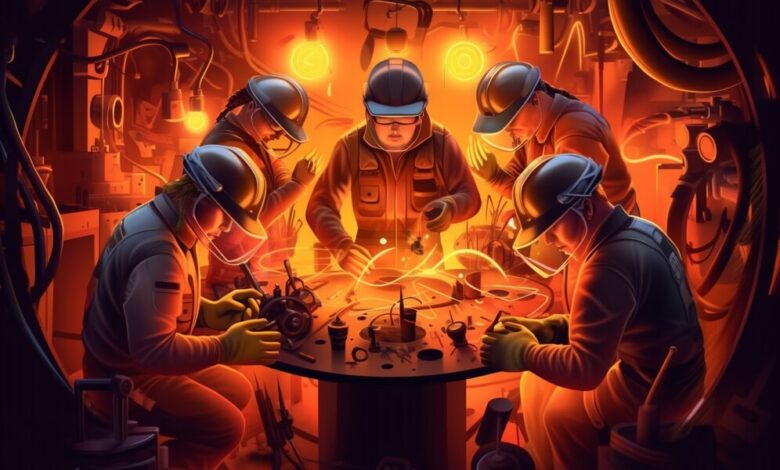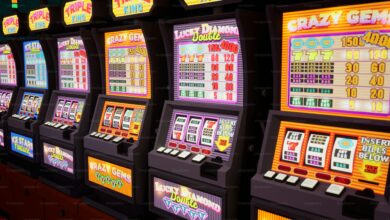Understanding the Savage Worlds SWADE Hardness Table Decay: A Guide for Gamers

The Savage Worlds SWADE Hardness Table Decay is an important part of your tabletop role-playing game experience. This table helps you understand how materials change over time and how they can be affected by damage. Knowing about the decay of different materials adds excitement and realism to your gameplay.
In the Savage Worlds system, the hardness of objects can decrease as they face damage or wear and tear. This means that even the strongest materials can become weaker over time. Understanding how the hardness table works with decay will help players make smarter choices when interacting with their environment. It also opens up new storytelling opportunities during your adventures.
What is the Savage Worlds SWADE Hardness Table Decay
The Savage Worlds SWADE Hardness Table Decay is a system that helps players understand how objects change over time. In this role-playing game, materials can get damaged or worn out, affecting their strength. This decay is important because it makes the game more realistic and fun.
Players can see how materials like wood or stone can break down with time or damage. For example, a wooden door might become weaker after several hits. Understanding decay helps players make better choices during their adventures. They might decide to avoid breaking a wall if they know it will collapse later.
Why Decay Matters in Savage Worlds Gameplay
Decay matters a lot in Savage Worlds gameplay because it adds depth to the story. When materials decay, it creates new challenges for players. They must think carefully about how they interact with their environment.
Here are some reasons why decay is important:
- Realism: Decay shows that materials are not always strong. This makes the game feel more real.
- Strategy: Players must plan their actions. Knowing which materials will decay helps them avoid mistakes.
- Storytelling: Decay can lead to exciting story moments. For example, a crumbling building might hide treasure but also be dangerous.
Understanding these factors will improve your gaming experience.
Understanding Hardness Ratings and Their Impact on Decay
The hardness ratings in the Savage Worlds SWADE system show how strong different materials are. Each material has a specific rating that affects how it decays. Stronger materials take longer to show decay, while weaker ones might break quickly.
Here’s a breakdown of how hardness ratings work:
- Hardness 0: Very weak materials, like glass. They break easily and decay fast.
- Hardness 1-5: Soft materials, like wood. They can last a while but will decay with enough damage.
- Hardness 6-10: Average materials, like brick. They are tough but still show signs of decay over time.
Knowing these ratings helps players understand which materials are worth using in their adventures.
How to Calculate Decay Using the Hardness Table
Calculating decay using the hardness table is simple and fun. When a character damages an object, players can use the hardness rating to see how much it can take before decaying. This system encourages teamwork and clever strategies.
Here are the steps to calculate decay:
- Roll for Damage: The player rolls the dice for damage based on their weapon or action.
- Check Hardness: Compare the rolled damage to the object’s hardness rating.
- Determine Decay:
- If the damage is higher than the hardness, the object decays.
- If the damage is equal to or less than the hardness, the object stays strong.
By following these steps, players can easily understand how their actions affect the environment.
Tips for Incorporating Decay into Your Game Sessions
Incorporating decay into your game sessions can make them more exciting. Here are some tips to help you use the Savage Worlds SWADE Hardness Table Decay effectively:
- Use Visuals: Show players what decay looks like. Describe crumbling walls or rusty doors.
- Create Challenges: Set up obstacles that involve decaying materials. For instance, a bridge might be weak and could collapse if players aren’t careful.
- Encourage Creativity: Allow players to think outside the box. They might find creative ways to deal with decaying materials.
These tips will enhance your game and make it more enjoyable for everyone involved.
Creating Unique Challenges with Decaying Materials
Decaying materials can lead to unique challenges in Savage Worlds gameplay. Players need to think strategically about how to handle these situations.
Here are some ideas for challenges:
- Crumbling Structures: Create environments that might fall apart, making players plan their movements.
- Weak Weapons: Introduce weapons that decay over time, forcing players to adapt their strategies.
- Environmental Hazards: Use decay to create hazards. For example, a decaying tree might fall unexpectedly.
These challenges can create memorable moments in your game.
The Role of Magical Elements in Hardness and Decay
In the Savage Worlds system, magical elements can significantly impact hardness and decay. Magic can either strengthen materials or make them decay faster. This adds an exciting twist to gameplay and opens up new story possibilities.
Magic can be used in various ways, such as:
- Enchantments: Players can cast spells that enhance an object’s hardness, making it tougher against damage. For example, a shield could be magically reinforced to withstand more hits.
- Curses: Some spells can weaken materials, making them decay faster. A cursed door might break down with little effort, surprising players who expect it to be strong.
- Environmental Effects: Magical environments can influence decay. For instance, a haunted forest might cause wooden structures to rot more quickly due to dark magic.
Understanding these magical interactions can enhance gameplay and lead to exciting scenarios for players and game masters alike.
Player Strategies for Managing Decay Effectively
Managing decay is crucial for players in Savage Worlds. Knowing how to deal with decaying materials can help characters succeed in their adventures. Here are some effective strategies:
- Plan Ahead: Before entering a building or crossing a bridge, players should assess the materials involved. This helps them avoid traps or potential collapses.
- Use Skills Wisely: Characters with skills in repair or magic can help mitigate decay. For example, a character can repair a damaged object, restoring its strength.
- Work Together: Teamwork is essential. Players can combine their skills to create better solutions for dealing with decay.
By employing these strategies, players can navigate the challenges posed by the hardness table and decay effectively.
Common Mistakes in Understanding Hardness Table Decay
Many players make mistakes when dealing with the Savage Worlds SWADE Hardness Table Decay. Understanding these common errors can help everyone improve their gameplay experience.
Here are some frequent mistakes to avoid:
- Ignoring Hardness Ratings: Some players forget to check the hardness ratings of objects. This can lead to unrealistic outcomes in the game.
- Miscalculating Damage: Players might misunderstand how to calculate damage against hardness. Taking the time to learn the mechanics is essential.
- Neglecting Decay Effects: Failing to consider how decay impacts the environment can lead to missed opportunities for storytelling and strategy.
By recognizing and avoiding these mistakes, players can enhance their understanding of the game and make it more enjoyable for everyone.
Enhancing Storytelling with Decay in Savage Worlds

Decay can greatly enhance storytelling in Savage Worlds. It provides unique opportunities for players and game masters to create rich narratives. Using decay in storytelling can lead to memorable moments and deeper character development.
Here are some ways to enhance storytelling through decay:
- Backstories: Characters might have personal stories linked to decaying objects. For example, a character could have a childhood memory of a dilapidated house that holds secrets.
- Foreshadowing: Use decay to hint at future events. A crumbling bridge could suggest danger ahead, creating tension in the story.
- Emotional Impact: Decaying materials can evoke feelings of loss or nostalgia. Players may feel attached to an object that decays, leading to emotional character moments.
Incorporating these elements into gameplay can lead to a more immersive and engaging experience for everyone involved.
Conclusion
In conclusion, the Savage Worlds SWADE Hardness Table Decay is an important part of the game that adds excitement and realism. Understanding how materials decay helps players make better choices during their adventures. It also allows for creative storytelling and unique challenges. When players think about how their actions affect the environment, it makes the game more fun and engaging.
Using decay in your gameplay can lead to unforgettable moments. Players can create clever strategies and work together to overcome obstacles. Whether through magical elements or planning ahead, there are many ways to enjoy the hardness table. By embracing the concept of decay, players can enhance their gaming experience and enjoy the world of Savage Worlds even more.
FAQs
Q: What is the Savage Worlds SWADE Hardness Table?
A: The Hardness Table helps determine how strong different materials are in the game. It shows how much damage they can take before breaking.
Q: How do you calculate damage against hardness?
A: To calculate damage, roll for your weapon’s damage, then compare it to the hardness rating of the object. If the damage is higher, the object takes damage.
Q: What happens when a material decays?
A: When a material decays, it becomes weaker and can break more easily. This adds challenges and excitement to the game.
Q: Can magic affect hardness and decay?
A: Yes! Magic can make materials stronger or cause them to decay faster, adding new twists to the gameplay.
Q: Why is understanding decay important in Savage Worlds?
A: Understanding decay helps players make better choices, plan their actions, and create more interesting stories in the game.



